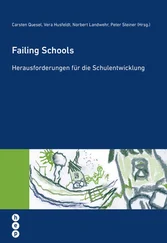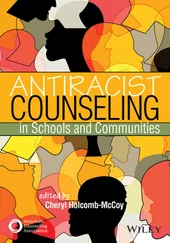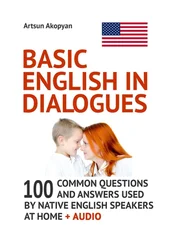In addition, dealing with topics in the non-language subject area goes beyond what is usually provided in regular FL teaching in terms of complexity and methodology. To illustrate the linguistic and cognitive challenges that the FL learners in the IM classroom face, Burmeister (2006) points to the curricular requirements for the subject “science” (which is taught in German in mainstream classes) for elementary schools in Schleswig-Holstein: the lessons in the subject “science” are aimed at developing “real life knowledge” and the initiation of “functional classification systems”, and the children at the end of grade 4 should be able “to draw conclusions”, “to think comprehensively”, “to jointly plan, execute and evaluate”, “to conduct research independently”, “to develop time concepts” and “to recognize and evaluate”, to mention just a few key competences (e.g., Ministerium für Bildung, Wissenschaft, Forschung und Kultur des Landes Schleswig-Holstein, 1997: 93). In the IM classroom, the children learn and apply these complex skills in the FL (and not in the majority language with which most of the children are more acquainted). Thus, bilingual teaching is not just about vocabulary learning but about conceptual learning, and combines learning concepts and their linguistic expressions (e.g., Bonnet, Breidbach & Hallet, 2003).
In sum, in language-driven (i.e., regular EFL) programs, content is used to learn the FL, i.e., FL learning is the priority, content learning is incidental, the language objectives are determined by the FL curriculum (i.e., English-as-a-subject), and students are evaluated on language skills/proficiency. In content-driven (bilingual) programs, the focus is on content being taught in the FL, i.e., content learning has priority, FL learning is secondary. Content objectives are determined by the curriculum of the specific subject (e.g., science), the teachers must select language objectives, and students are evaluated on content mastery (see Met, 1999: no page).
2.3.2 Different bilingual programs: CLIL vs. IM
Throughout Europe, the umbrella term Content and Language Integrated Learning or CLIL is used to refer to the educational option of teaching non-language subjects through a second language (L2). More specifically, this term pertains to “all types of provision in which a second language (a foreign, regional or minority language and/or another official state language) is used to teach certain subjects in the curriculum other than the language lessons themselves” (Eurydice, 2006: 8). In the Anglo-American context, however, the term “immersion” (IM) is being used. Both concepts, CLIL and IM, have in common that subject teaching takes place in a language that does not correspond to the students’ ambient language (i.e., English instead of German in Germany).
The following core features are also shared by CLIL and IM programs (e.g., Nikula & Mård-Miettinen, 2014). First, both share the conviction that foreign/second language competence should not be regarded as a separate skill but one intertwined with students’ cognitive, conceptual and social development, best supported by engaging students in meaningful and cognitively and academically challenging language use. Second, CLIL and IM subjects are timetabled as content and not as language lessons, which also means that teachers are typically content rather than language teachers. Third, CLIL and IM subjects complement foreign language instruction rather than serving as its replacement.
However, Nikula & Mård-Miettinen (2014: 2) point out that that demarcating CLIL and IM may simply result in “dead ends” because CLIL and IM as terms have fuzzy boundaries, both when used in academic discourse and as everyday concepts. Nevertheless, IM and CLIL show many differences (see Nikula & Mård-Miettinen, 2014 for a detailed description). First, IM and CLIL differ according to the geographical and sociopolitical context and their dates of origin (starting in Canada in the 1960s and in Europe in the 1990s, respectively). Second, the new language often is a national language in immersion programs (e.g., French in Canada) but a transnational lingua franca in CLIL programs in Europe (e.g., English in Germany). For this reason, CLIL teachers are more commonly non-native speakers of the instructional language than immersion teachers, i.e., lingua franca users of English themselves. Third, the introduction of CLIL takes place more often in secondary levels, while it is commonplace for IM education to begin at kindergarten or elementary levels (see also Burmeister, 2013; Cenoz, Genesee & Gorter, 2014; Genesee, 1987). Finally, CLIL and IM programs may differ in their intensity: CLIL programs in Europe are often characterized by teaching only one or two subjects in the target language (e.g., history, geography or science), corresponding to 10-30% of the teaching time. In Canada, however, IM programs may only be labeled as such when more than 50% of the teaching time is conducted in the new language. This difference is illustrated below in chapter 2.3.3.
2.3.3 Intensity of different bilingual programs
As mentioned above, bilingual programs (in Germany and elsewhere) differ according to their intensity, i.e., the quantity of FL input. Kersten (2019) provided an overview of content-based approaches in FL teaching, ranging from low to high intensity:
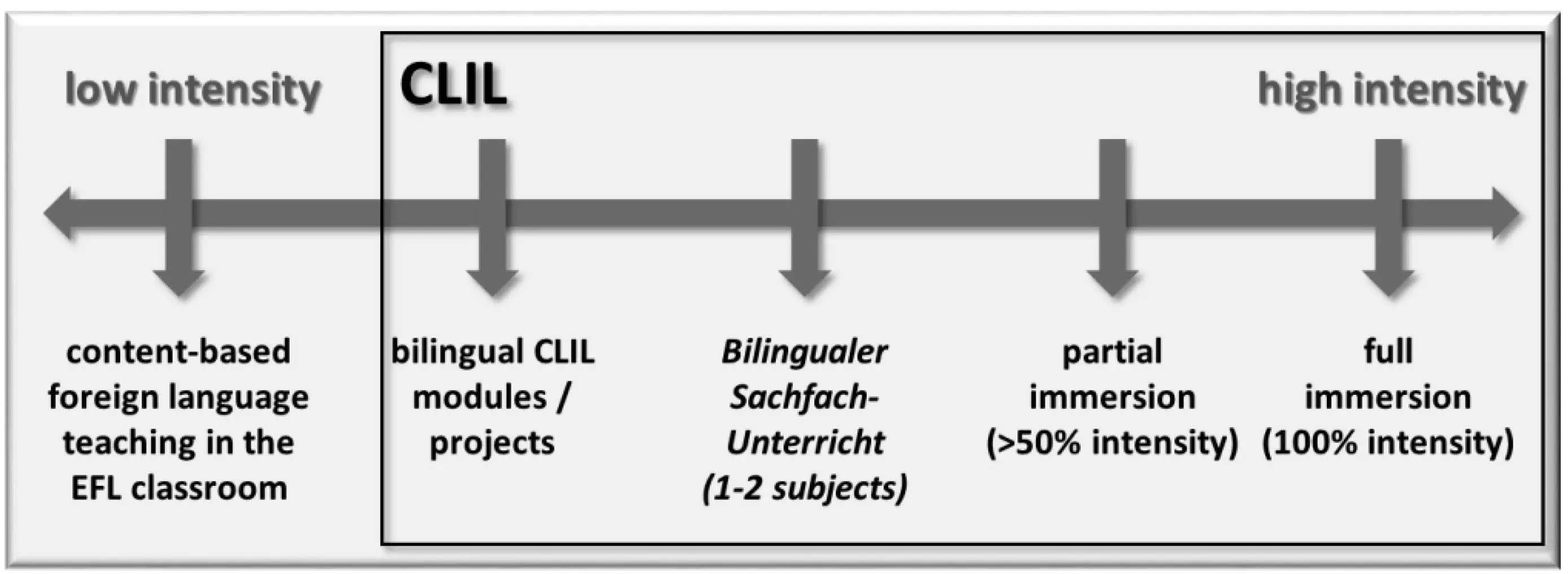 Figure 1:
Figure 1:
Continuum of FL intensity in content-based approaches (adopted from Kersten 2019: 40).
In Kersten’s (2019) view, content can – and also should – be part of any regular FL teaching, although in such programs the focus is not on content, but on the FL. To reiterate, bilingual programs (particularly in Europe) are conceived under the generic term “CLIL”, which encompasses all forms of teaching one or several subjects in a FL (e.g., Coyle et al., 2010; Mehisto, Marsh & Frigols, 2008; KMK, 2013). Less-intensive bilingual programs include individual bilingual modules or projects, where, for example, the topic “water” is taught in the FL over a limited period of time, usually lasting only a few days or weeks. “Bilingualer Sachfachuntericht” (or CLIL proper), which in Germany is most widely taught from secondary level 1 onwards, usually offers one to two subjects in the foreign language (for example history, geography), often lasting for one year or several years. The most intensive forms of bilingual teaching are immersion (IM) programs. In partial IM programs, at least 50% of the curriculum is taught in the FL (this also applies to two-way or dual IM programs1). In full (or total) IM programs, teaching takes place 100% in the FL and over a longer period, i.e., for many years. In Canada, total IM programs are often provided for young English learners in French IM programs, which turn into partial IM programs in later years in order to provide additional teaching in the students’ L1 English (e.g., Genesee, 1987)2. As a result, IM programs are the most intensive forms of bilingual education in the continuum of programs varying in FL intensity (e.g., Burmeister & Massler, 2010; Kersten, 2019; Mehisto et al., 2008, as illustrated in Figure 1) and have been found to be particularly effective in terms of FL competence, without neglecting subject competence (e.g., Genesee 1987, 2004; Pérez-Cañado, 2012; Wode 1995, 2009; Wesche, 2002, and also see below). In Germany, however, total IM programs (where the target language is used exclusively in all lessons and subjects in school) are not possible because, according to the Standing Conference of the Ministers of Education and Cultural Affairs (KMK, 2013b), the subject German must be taught in German. That means that in elementary schools in Germany, only a maximum of 70-80% of the teaching time can be conducted in the new language, corresponding to partial IM programs (for a further review, see Piske, 2015).
Читать дальше
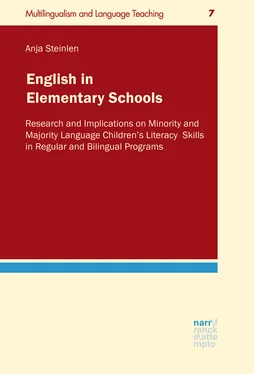
 Figure 1:
Figure 1:

